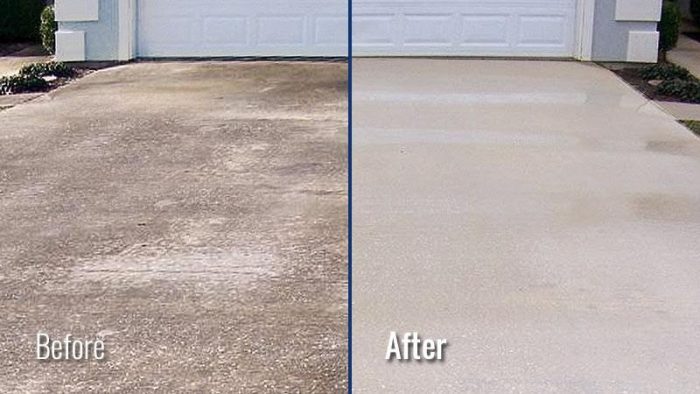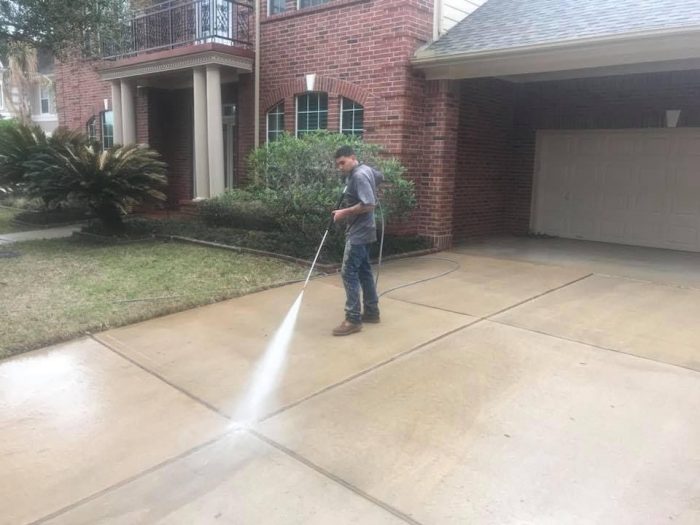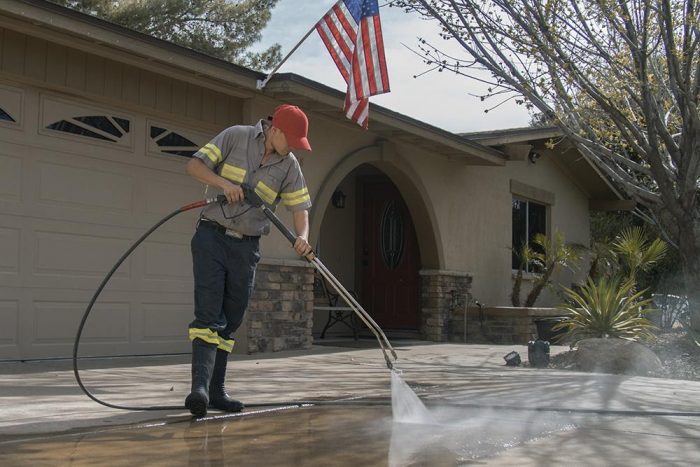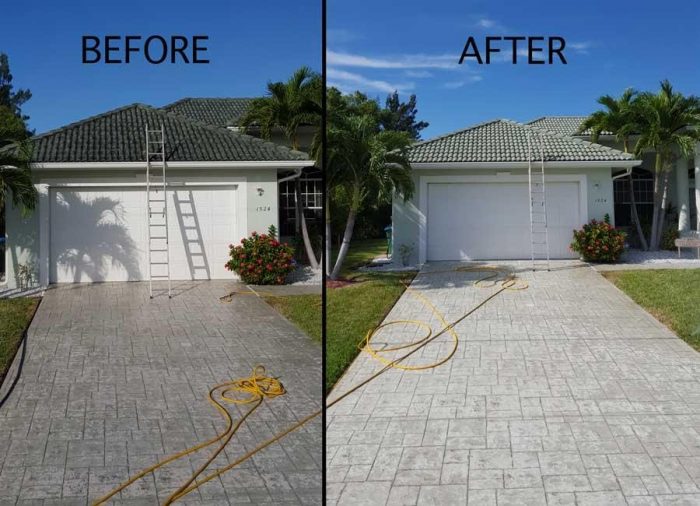Easy and Effective Ways to Pressure Wash Your Concrete Driveway
You may not notice it at first glance but closer inspection will reveal how grimy your driveway is. Ignoring your dirty driveway can be hazardous. Likewise, potentially harmful and corrosive chemicals, salt, sand, filth, and more are covering it.
Regular pressure washing presents numerous benefits to your property. Aside from keeping it fresh all the time, it can help increase its curb appeal. This, in turn, it will have a huge impact on your home’s overall value.
Also, manual scrubbing is a tedious and time-consuming process. It’ll exhaust you physically as well. Fortunately, power washing your driveway will make your life a lot easier. It allows you to clean your concrete, enhance its beauty, and prolong its life with minimum physical effort.
Nonetheless, keep in mind that these machines are powerful. And if you don’t know what you’re doing, you may end up ruining your property instead of improving it. So before getting your hands on a pressure washer, make sure you know how to use it properly. This will ensure you’ll get the most out of your unit while providing your driveway with efficient cleaning.
How Does a Pressure Washer Work?
Pressure or power washing is one of the easiest and quickest ways to get rid of debris, dirt, discoloration, stains, etc. from the outdoor surfaces of your house. You typically hook your residential pressure washer to a garden hose. It pressurizes water dramatically as it goes out of your unit.
Power washers are powered by either electricity or gas. You can also adjust its pressure if you’re going to take on more difficult filth. That’s why it’s vital to know the distinction between an electric and gas washer. Doing so will ensure that you have the right type suitable for your needs. Make sure to read this article on how to choose a pressure washer (gas) to help you decide.
An electric pressure washer can usually produce 1300 to 1900 PSI. On the other hand, a gas power washer can give out 2000 to 31000 PSI. Some washers even offer higher pressures, which are perfect for commercial purposes. Keep in mind that you have to be cautious when using a powerful unit like the gas model. These machines can generate pressure strong enough to damage fences, decking, and other soft materials.
How Often Can I Pressure Wash My Driveway?
Like most homeowners, you may not be aware that you can power wash your property all year long. You can do it even during the colder months. Just make sure to check that the temperature outside is above 40F so that you don’t have to deal with ice.
Nevertheless, the best season to take out your pressure washer is during summer or springtime. Wetter and warmer months are also an ideal time since this is when mildew and algae starts to build up and pollen is at its highest.
Safety First
Your safety should be on top of your priority list. The water that will come out of your device is at such immense pressure that it can hurt you or your family. So before anything else, it’s crucial to follow these proper safety guidelines:
- Do not direct the spray nozzle at yourself or anyone around you. This can cause significant wounds to your body.
- Always wear boots or any closed-toe footwear when operating a washer.
- Wear protective goggles to protect your eyes from water or any flying debris.
Steps to Power Wash Your Concrete Driveway
Step 1: Prepare the materials you need
Here are the things you need to power clean your driveway properly:
- Your pressure washer machine
- Garden hose
- Broom
- Stiff brush
- Detergent especially made for pressure washers
- Bottle of degreaser or cleaner
- Waterproof sealant
- Tarp or plastic sheeting
- Masking tape
- Paint pan and roller
- Safety attire including gloves and goggles
Step 2: Read the owner’s manual
Make sure to read your unit’s manual thoroughly. You must understand the steps appropriate to the type of machine you have. Every model differs and may need special attachments, assembly, or preparation.
Step 3: Clean and prepare your driveway
Before you start with the washing process, you need to clear your driveway of obstacles first:
- Use your broom or stiff brush to sweep away stones, sticks, leaves, etc.
- Pick up any toys lying around, put aside outdoor furniture, and potted plants.
- According to www.bristoldrivewayspro.co.uk cover all doors and walls adjacent to your driveway with a tarp or plastic sheeting and masking tape to prevent damage.
Step 4: Degrease the surface of your driveway
Apply a degreaser by spraying your area with the cleaner solution. Degreaser can aid at breaking up the stubborn stains on surfaces. Some power washer models come with a tool you can attach to it for degreasing. If your unit doesn’t have one, you can use a stiff brush or broom to scrub in on the concrete.
Step 5: Equip your power washer
- Attach the tip appropriate for washing at the spray wand’s head. If you’re not sure, consult your manual. But usually, it is labeled soap.
- The next step is to connect the spray wand to the unit itself by using your garden hose, which is where the water supply will come from.
- Lastly, attach the hose to your water source, and then turn it on.
Again, every pressure washer model varies. So always read and follow all the instructions and guidelines in your machine’s manual.
Step 6: Load your unit with detergent
Power washers often come with a detergent siphon tube, which you need to place directly in the detergent box or container. Once you start the washer, the tube will bring the detergent solution into the spray wand’s water stream right away.
Step 7: Apply the detergent
Use safety gloves to protect your hands. Hold down the spray handle and keep a consistent distance between 8-18 inches from the concrete. Begin applying detergent by working your way back and forth. Do this in a controlled and smooth manner, ensuring that you overlap every stroke by 6-8 inches. When done with the entire area, let the detergent sit on the driveway surface for at least 5 minutes.
Step 8: Rinse the concrete surface
To rinse the detergent off your driveway, replace the wand tip with a high-pressure one. Also, set your unit to rinse mode to begin pressure washing. Then, hold down the spray handle and do a similar back and forth pattern to wash away the solution and stains.
For paint and other heavier stains, hold the tip closer to the surface and move with nearly still and slower strokes. Doing so will apply more pressure and ensure the removal of more difficult stains.
Step 9: Seal concrete
Pour waterproof sealant into your paint pan. Then, using a roller, apply it beginning at the center of your concrete surface, all the way to the edges. Wait at least 24 hours before parking any vehicle on your driveway.
Conclusion
Your driveway is one of the most indispensable elements of your property. However, to maintain its good shape and make it look more professional, it requires regular upkeep. By following these simple power-washing techniques you can have a clean and fresh driveway that will last a long time.
Find a Home-Based Business to Start-Up >>> Hundreds of Business Listings.




















































